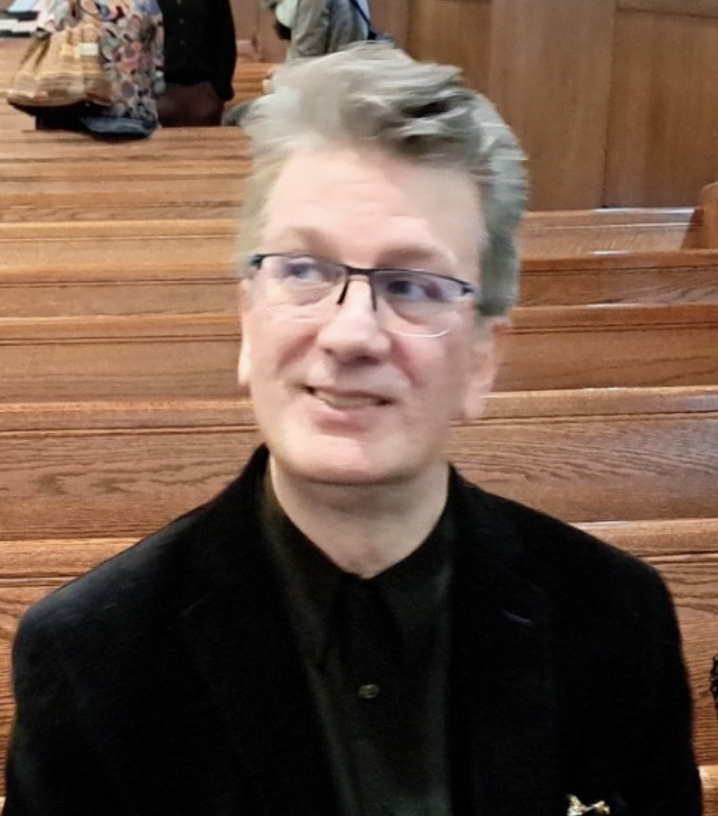|
Symphony
SRS SEASON ENDS WITH RESOUNDING TA-TA-TA-BANG
by Terry McNeill
Sunday, June 1, 2025
Symphony
YOUTHFUL VIRTUOSITY ON DISPLAY AT USO'S MAY CONCERTS
by Peter Lert
Saturday, May 17, 2025
Symphony
MYSTICAL PLANETS AND LIVELY GERSHWIN ORTIZ AT FINAL SRS CONCERT
by Peter Lert
Sunday, May 4, 2025
Symphony
VSO'S CONCERT MUSIC OF TIME, MUSIC OF PLACE
by Peter Lert
Sunday, April 27, 2025
Choral and Vocal
VOCAL ELEGANCE AND FIRE AT THE 222'S RECITAL APRIL 26
by Pamela Hicks Gailey
Saturday, April 26, 2025
CANTIAMO SONOMA SINGS AN INSPIRED GOOD FRIDAY MOZART REQUIEM CONCERT
by Pamela Hicks Gailey
Friday, April 18, 2025
DRAMATIC SHOSTAKOVICH SYMPHONY CLOSES PHILHARMONIC'S 25TH SEASON
by Terry McNeill
Sunday, April 13, 2025
LARGE COLLEGE OF MARIN AUDIENCE GREETS STOPHER ARTISTRY
by Terry McNeill
Saturday, April 5, 2025
Chamber
FRISSON DELIVERS SHIVERS OF DELIGHT
by Abby Wasserman
Sunday, March 30, 2025
OLD AND MOSTLY NEW IN SRS MARCH CONCERT IN WEILL
by Peter Lert
Saturday, March 22, 2025
|
 |
 Conductor D. Canosa Feb. 4 (A. Wassserman Photo) |
ECHO CHAMBER ORCHESTRA CREATES A BUZZ
by Abby Wasserman
Saturday, February 4, 2023
Composer Matthew Rupert’s Cicadas, Op. 7, opening ECHO Chamber Orchestra’s “The Creation of the World” February 4 program at San Anselmo’s First Presbyterian Church, started so modestly that many in the half-full audience were unaware the concert had begun.
It certainly did, with a swelling buzz, like a hundred undulating high tension wires, and rose in volume as percussionists Christian Foster Howes and Cassandra Firmin, and Mr. Rupert’s piano, joined the audio recording with marimba, piano and wind chimes in piquant accents and melodic overtones. The whole was a miniature tapestry in brilliant colors and lasted only a few minutes.
The cicada’s sound comes from an instrument-like appendage on males only called the tymbal, located under their wings and moved with rippling effect through muscular action, magnified by a soundboard-like part to the tymbal, and more amplified by the insect’s hollow abdomen. The performance was over all too soon—I would have liked a repeat.
Music Director Daniel Canosa took the podium for Milhaud’s ballet Le Création de la monde, featuring the entire orchestra. In Milhaud’s brilliant synthesis of classical and jazz forms, the main voice belongs to the tenor saxophone, which was played with sensual richness by Robin Lacey. The composer initially became intrigued with jazz in Europe, but became enamored with authentic African American jazz during a trip to New York’s Harlem in 1922. Earlier in his life Milhaud lived in Brazil, and had similarly imbibed the rhythms and spirit of Brazilian popular music, which also had African roots. La Création de la monde was finished in 1923.
There are five parts, although in this performance, parts three, four and five were played with little or no division. Part one, Chaos before Creation, floated with dark mystery, growing in intensity. Part two, about the creation of living things, was bright, chaotic and spontaneous. Jon Arneson’s oboe and Carol Adee’s flute parts were eloquent, but the entire ECHO ensemble contributed to the musical texture, and Ms. Lacey’s saxophone was the protagonist throughout. The third part, the Creation of Man and Woman, was exuberant. Desire, the fourth part, featured a sensual clarinet solo by Kyle Beard. Part five was a sinuous evocation of a kiss, with warm oboe and fluttering flutes. At the conclusion, the audience showed its appreciation with lengthy applause. It was a well-balanced and convincing performance.
Ms. Adee, often a lively emcee at ECHO concerts, brought Mr. Rupert and fellow composer Belinda Reynolds, who also was premiering a new work, to the stage, and asked each to say when they first began composing. Ms. Reynolds revealed that she first composed music at age six; while Mr. Rupert began when he was thirty-six! ECHO is distinctive by the opportunity Mr. Canosa gives to local musicians, often members of his orchestra, to introduce their compositions.
Ms. Reynolds’ tone poem Echos, next on the program, was created for the orchestra at Mr. Canosa’s invitation. It is characterized by tempestuously changing moods, diverse rhythms and echoing repeats that vary slightly with each iteration—an exciting ride.
Mr. Canosa and the orchestra completed the program with a flourish: Mendelssohn’s C Minor Symphony (No. 1) Op. 11, composed when he was fifteen. The conductor spoke from the stage about the Symphony, saying that it was not Mendelssohn’s first effort in the form, but the first that incorporated a full orchestra.
The first movement, Allegro di Molto, launches in the full tumult like a wild storm or a team of runaway horses, and requires great precision. The orchestra’s performance started out a bit wild and ragged at first, but midway through the movement the ensemble settled down. The Andante second movement was serene and pastoral. The winds and brass sang sweet melodies as the strings wove and curled underneath. The playing in the third Menuetto movement brought back wildness, but disciplined. The conductor led ECHO in building intensity and shaping phrases that were ardent and compelling. A pastoral section followed, leading to an Allegro con fuoco finale that featured string pizzicato, lovely clarinet and flute melodies and a fugue that passed from instrument to instrument. It was rich ensemble playing, especially the high strings, flutes and trumpets.
A final fugal section brought the symphony to its coda, concluding with bursts of joy and triumph.
|

